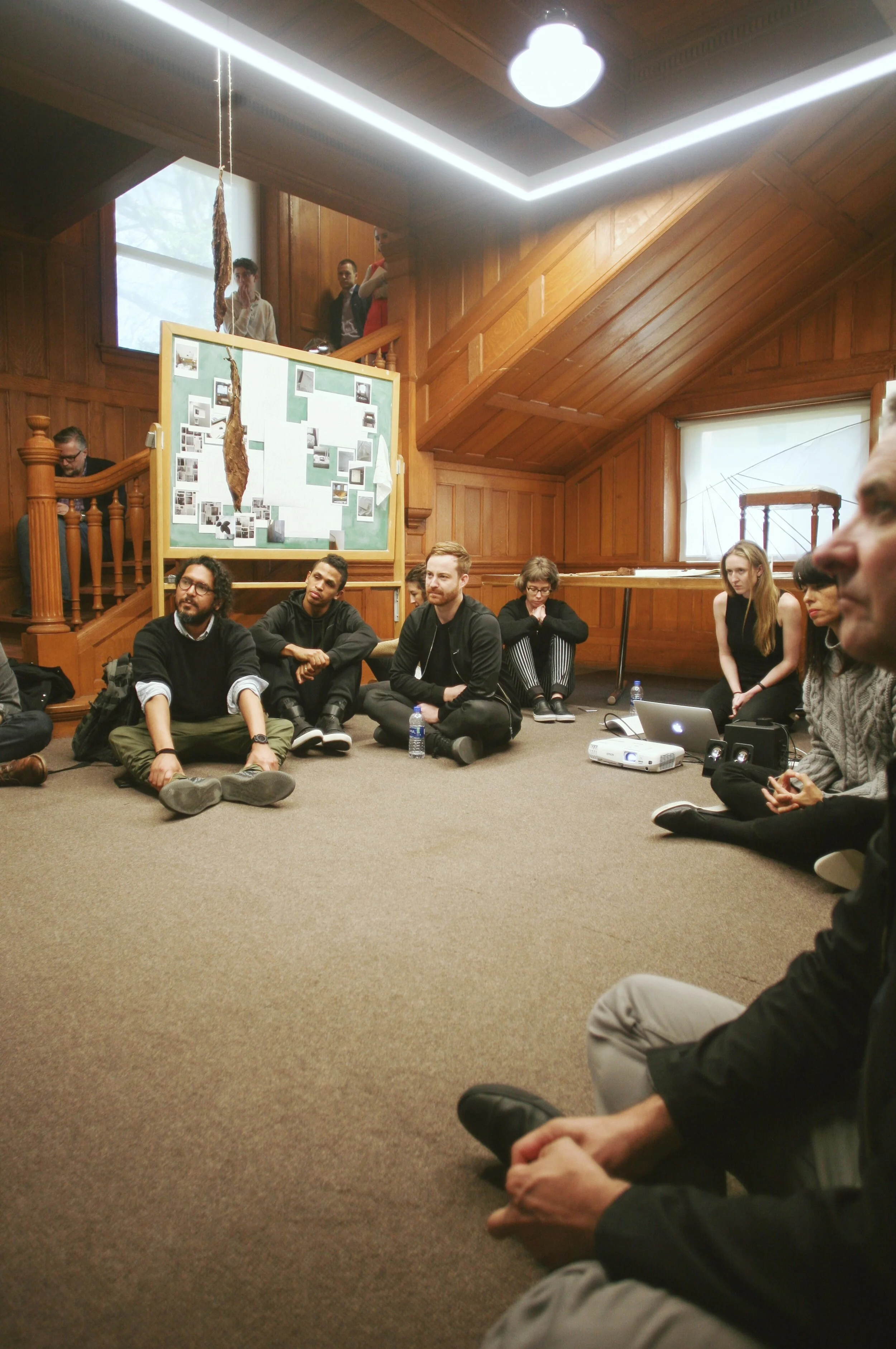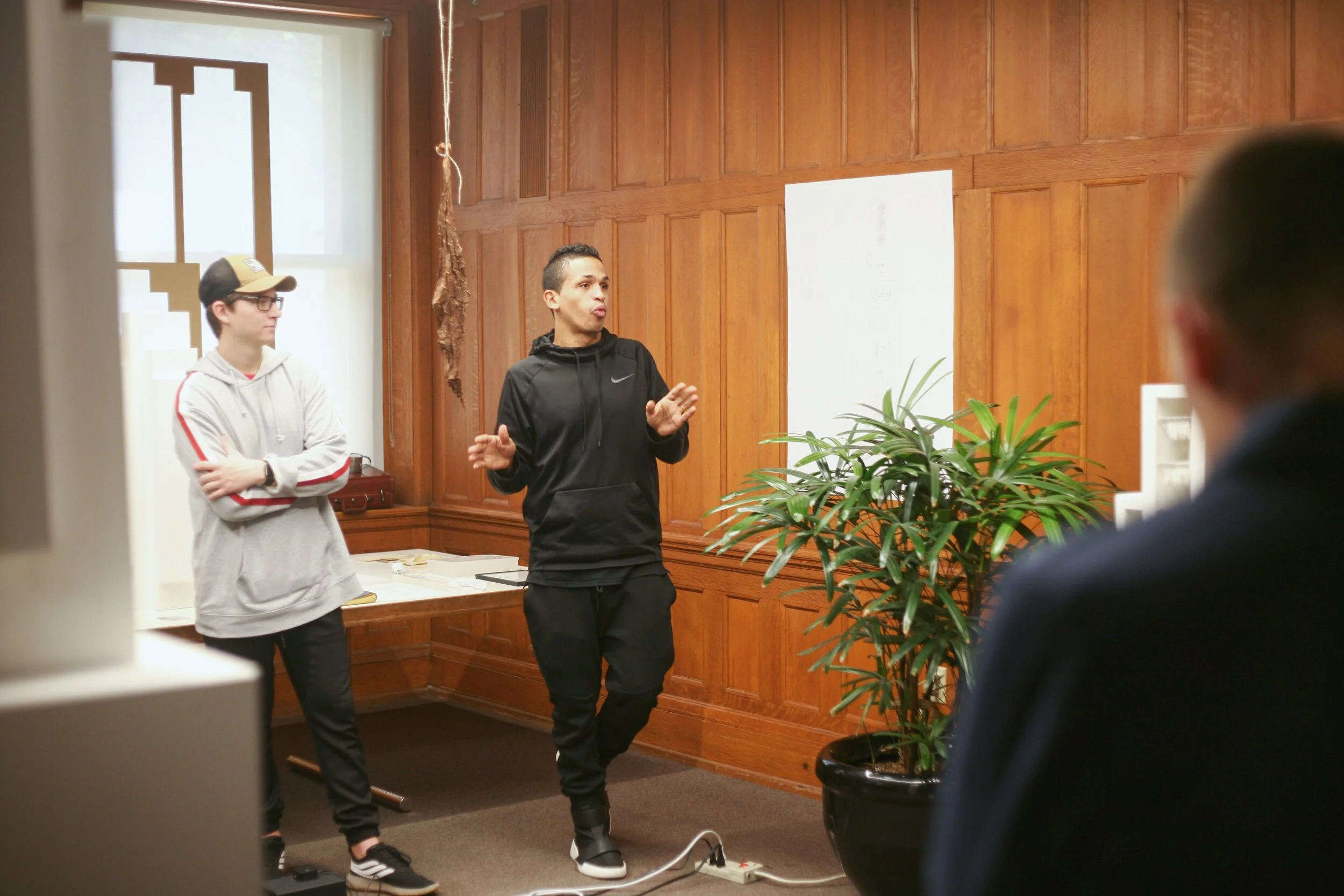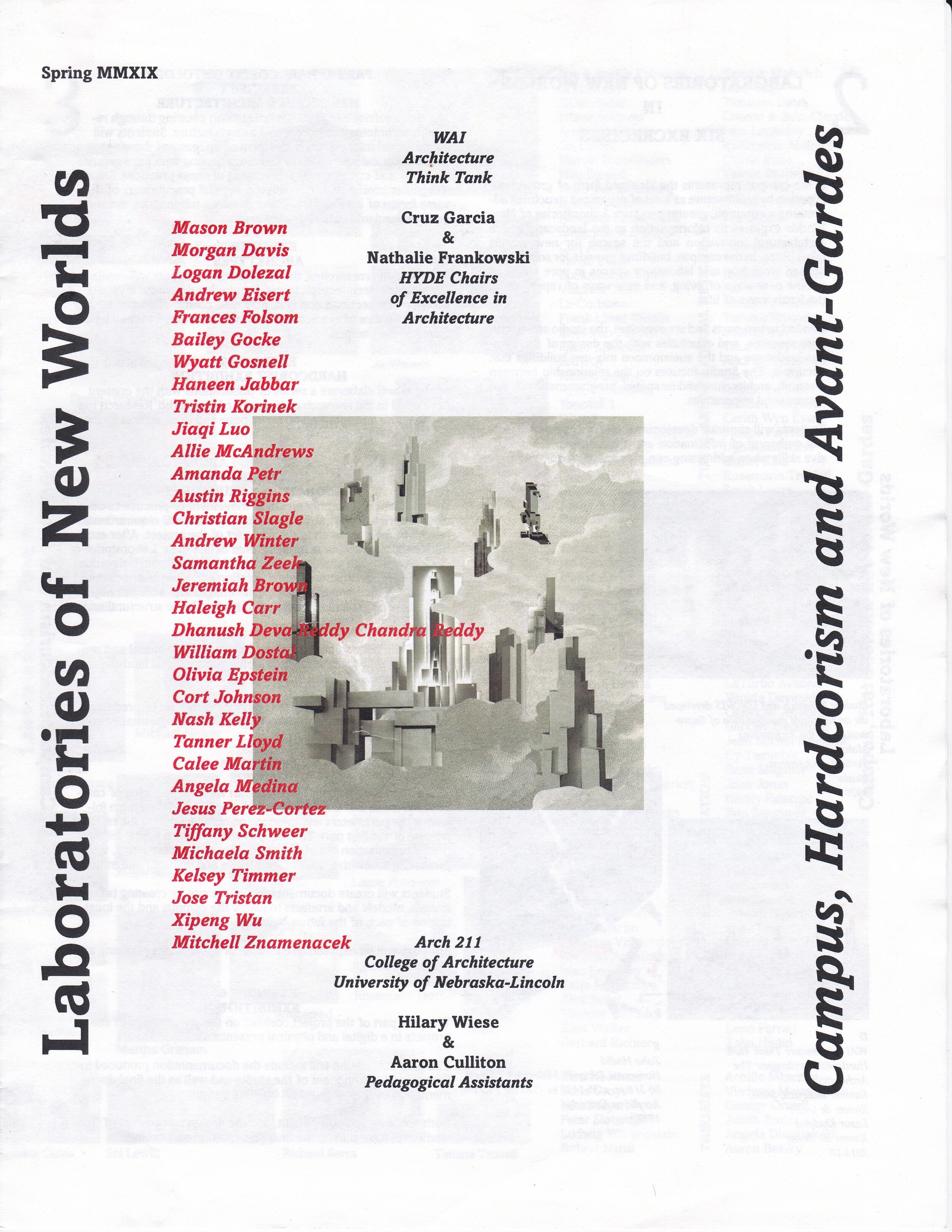What About It: Architecture and Social Responsibility
An architecture manifesto, as told to Deem by Cruz Garcia & Nathalie Frankowski of WAI Architecture Think Tank
Photography by S. Leimbach

Cruz Garcia and Nathalie Frankowski @ University of Nebraska, Lincoln
WAI is an acronym for “What About It?” That is a relevant query because we are always questioning everything, so it seemed an appropriate concept to use when we started working together. We felt there was something disappointing about architecture, and actually about many disciplines. But we are architects, so we looked at the problem from an architectural point of view. Architects often don’t ask what they’re doing. We’re trained simply to respond to prompts, challenges, programs, and commissions, instead of asking whether something truly warrants a response. Often, that puts architecture in an awkward position as an instrument of power. We don’t identify much with (and even reject) this way of working and the dynamics it produces; we find it deeply problematic. WAI is a concept, but it’s also a question. The irony is that it also sounds like an acronym for a big architecture studio; many of these offices have a three-letter name. But, our letters stand for an idea, not for the last names of three old white men.
“Architects often don’t ask what they’re doing. We’re trained simply to respond to prompts, challenges, programs, and commissions, instead of asking whether something truly warrants a response.”

Sometimes it’s better to ask a question than to bring a solution, especially when you consider the power of questioning as a critical tool. We think that asking questions can widen a discussion much more than looking for answers in a traditional way. A linear process automatically leads you to an end. Different challenges will make you ask different questions, and those questions will lead you to the frameworks necessary to answer them. Our focal point is the execution of architecture from a panoramic approach, because a lot of people think that architecture is just making buildings—installing some rebar, assembling some steel, pouring some concrete, casting some foundations. That’s part of architecture, sure, but that’s not architecture. You can make buildings but that doesn’t make you an architect, at least not according to our definition. You can’t pretend that you’re going to solve all the problems of the world through a blueprint or a section drawing or some little scale model. The more you understand that architecture is part of a larger infrastructure with complex connections to multiple power structures, the more you understand the necessity of a dynamic approach. Not only are you dealing with numerous challenges and problems, but every challenge and every problem requires a different set of parameters and media.
“Sometimes it’s better to ask a question than to bring a solution, especially when you consider the power of questioning as a critical tool.”
In his Tractatus Logico-Philosophicus of 1921, Ludwig Wittgenstein wrote, “The limits of my language mean the limits of my world.” If you don’t have the tools to communicate, you won’t be able to address whatever it is you’re grappling with. That’s the problem we encounter most of the time. We’re dealing with ideas we cannot even articulate, because we lack the tools and strategies to do so. Similarly, sometimes you cannot communicate a certain idea just by drawing a building. Sometimes you have to write, you have to make a film, write a poem, paint, perform, teach—you have to search for the media that will allow you to represent the question you’re asking. The more limited your vocabulary and its sources, the harder it is to address the subject at hand. The more limited your tools of communication, the more limited your capacity to devise new worlds. Some of these limitations arise from the idea of architecture as a profession and a field of “expertise.” What does it mean to be an architect? Once you start to question how and by whom architecture has been defined, you can start pushing its boundaries. How to define the role of an architect has been a historical discussion in architecture. And history has proven that architecture is very difficult to narrow down. Architecture comes with a certain social responsibility, in part due to the scope of its impact on society. An architect has to deal with the idea of building an environment, but for whom do you build? What is your role as an architect within a larger system? What is the relationship of building and designing to your social, cultural, political, ideological, and historical context? The more you think about the role of the architect, the more it becomes apparent that it is impossible to define it.
Then there’s the idea of “critical” architecture, but often this never transcends the realm of aesthetics—of drawings or images that look critical. We learn, from critical theory and practice, about the pressing challenges of our times and the need to ask urgent questions. But if the ultimate goal of critical theory lies in its search for human emancipation, we must first learn to identify the things that oppress us. We will then need many different critical theories that act in different ways to address the multiple circumstances of oppression. From these considerations arises the question: what is critical architecture? This is hardly a new question and, indeed, architecture is hardly a new profession. But that’s also why we must keep expanding its boundaries, why we must keep on trying to include more voices and tools of presentation and representation, and why we must continue asking questions, even if these questions are difficult or even detrimental to the “profession,” from an economic point of view. It’s a never-ending story, an endless process of self-assessment and critical self-examination. Architecture has a very rich but also very problematic history. Architecture is complicit with power and the role of the architect has therefore historically been complicit with heinous crimes, social damage, and irreversible destruction. How can we contribute to acknowledging architecture’s shortcomings, limitations, and threats? How can we keep on finding ways to expand the tools and strategies of presentation and representation? How can we expand the limits of our world through a growing language and vocabulary that takes into consideration many different struggles for emancipation?
“How can we expand the limits of our world through a growing language and vocabulary that takes into consideration many different struggles for emancipation?”
Is what we do social practice? We wouldn’t necessarily identify social practice as something particular. Everything we do is, in some way, a social practice, right?




Our project is trying to contribute to the collective bettering of the world through the entry point of architecture. But this responsibility is not just architecture’s, which is why we try to incorporate as many different fields, philosophies, points of view, and strategies as possible. We believe that other, more inclusive, diverse, solidary, fair, and generous worlds are possible. We believe that an honest, critical architecture can strive to create these worlds. Society, and therefore social practice too, are very complex concepts—we cannot rely solely on ourselves to transform the world. But that’s the very challenge of social practice: its expansiveness and elusiveness. Because society is so difficult to define and to narrow down, social practices work with a concept that is constantly transforming its surroundings and being transformed by them. Nothing is an island; everything is connected. We’ve always identified with a collective struggle and a collective initiative towards ending the suffering that comes from oppression, by and through whatever means. Trying to define the social contains the same challenges as trying to define the political. We think everything is political and everything is social.
WAI Architecture Think Tank is an international studio practicing architecture, urbanism, and architectural research, founded in 2008 by Puerto Rican architect, artist, curator, educator, author, and theorist Cruz Garcia and French architect, artist, curator, educator, author, and poet, Nathalie Frankowski











